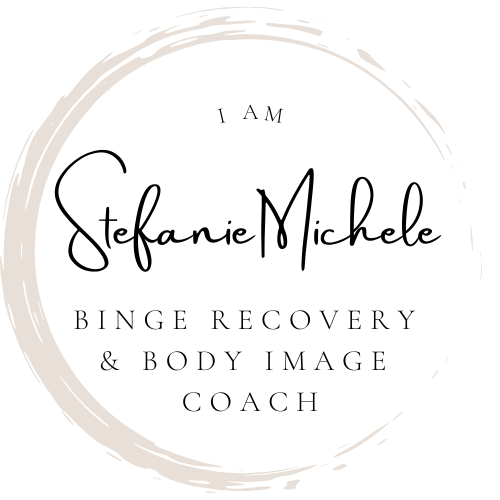Help! I’m afraid to bring back my fear foods.
If you are starting the process of Intuitive Eating or Diet Culture recovery, one step is to “challenge the food police.” This usually requires bringing foods back into your diet that were previously forbidden.
This can be very hard to do because controlling food is a way that we feel in control of our lives and what happens to us. Giving this up may feel like you are sacrificing your autonomy.
However, it is important to remember that autonomy does not lie in feeling like a slave to food, or in being afraid of it.
Here are some things to remember:
The fear is rooted in a limiting belief that certain foods are wrong or bad. We developed this categorization of food to make things feel more within our control. Clear cut categories make decisions easier for our brains, and therefore feel like a direct path to being “good.” Actually allowing yourself to eat the food challenges the idea that food is so black and white (good or bad). You WILL eat the food for a while if it's available to you, so part of this process is understanding that this is going to happen. Repeated exposure to what you fear can diminish its perceived power. It gives us evidence that food does not automatically translate into our greatest fears.
Food habituation happens when you actually eat the food. Habituation is the practice of repeatedly exposing yourself to a food and experiencing a reduction of binge-worthy desirability for it. But habituation will not happen unless the food is actually eaten -- more than once. Reframe the expectation that eating a food a few times will lead to a reduction of urgency around it. The food will feel very desirablefor a while before the charge mellows out. Expect to eat the food when you bring it into the house.
Not every food needs to be re-introduced.In my experience, neutralizing food did not require me to eat every single food I could ever imagine. If that was the case, I'd still be in the process of habituating! Start by choosing the foods that you have been consiously avoiding. What foods do you crave that you resist on purpose? If you have rules around specific foods, challenge those rules by breaking them. Over time, the permission around heavily charged foods can create more mental flexibility around other foods.
"Highly palatable" foods can be habituated, too. I was Clean Eating guru #1 for many years, and believed in the high palatability of food. As it turns out, I am able to keep "highly processed foods" in my home without incident, and they hold no more power over me than any of my other fear foods did. In fact, the fear food that took me the longest to habituate was nut butter (organic, raw, and otherwise classified as "clean)." The demonization of foods is a more likely driver of feeling addicted to them.
If it feels too triggering, take it slow. For some of my clients, going "all-in" (meaning: bringing the foods back into the rotation all at once) is easier and more effective. For others, going slowly is really important to avoid becoming overwhelmed. The pace is up to you and based on what you are comfortable with. Experiment and see what feels right.
This process takes time. It should feel somewhat uncomfortable, but not so much that you become overwhelmed or traumatized. Reach out if you need support.

